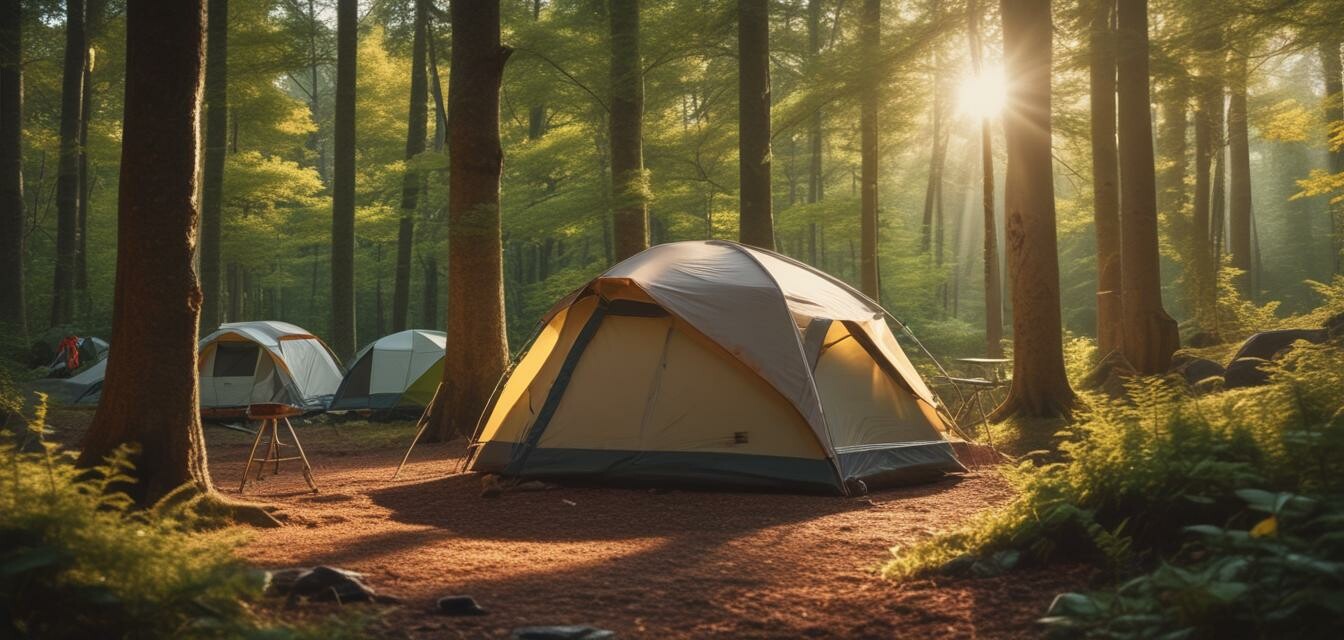
How to plan a solar-powered camping trip
Key takeaways
- Understand the benefits of solar power in camping.
- Prepare a gear checklist for essentials.
- Learn safety precautions while using solar equipment.
- Plan your campsite location for optimal sun exposure.
- Maximize energy efficiency with smart planning.
Planning a solar-powered camping trip can be a game-changer for outdoor enthusiasts. Utilizing solar energy not only helps reduce your carbon footprint but also provides the comfort and convenience of electricity while enjoying nature. This article serves as a step-by-step guide to ensure a successful solar-powered camping experience.
1. Understanding solar power for camping
Solar power is a renewable energy source that harnesses the sun's energy. With advancements in technology, solar equipment has become more accessible for campers. You can power everything from lights to charging devices, making your camping experience more enjoyable.
Benefits of solar-powered camping
- Environmentally friendly solution
- Cost-effective in the long run
- Provides access to energy in remote areas
- Reduces dependence on disposable batteries
2. Gear checklist
Preparing for your solar-powered camping trip requires gathering the right equipment. Here’s a handy checklist to ensure you have everything you need:
| Essential Gear | Description |
|---|---|
| Solar Tent | A tent equipped with solar panels or features that support solar devices. |
| Portable Solar Panel | Lightweight solar panels for charging devices and powering lights. |
| Power Bank | A portable charger to store solar energy for later use. |
| LED Lights | Energy-efficient lights powered by solar energy. |
| Solar Cooker | A cooker that uses solar power to prepare meals outdoors. |
| Solar Lanterns | Rechargeable lanterns that provide light at night. |
| Cables and Adapters | Essential for connecting devices to solar power equipment. |
3. Safety precautions
When using solar power equipment, safety should be your top priority. Here are essential tips to keep in mind:
- Always check for compatibility of devices with solar equipment before use.
- Set up solar panels in a safe and stable position to avoid damage.
- Keep solar charging stations clear of obstructions and debris.
- Use batteries and power banks according to the manufacturer's instructions to prevent overheating.
4. Choosing the right campsite
Finding the perfect location for your solar-powered camping trip is crucial. Consider the following factors:
- Ensure there are no tall structures or trees that might block sunlight.
- Look for clearings with ample room for setting up your solar tents and equipment.
- Check the weather forecast to avoid rainy conditions that could hinder sunlight exposure.
5. Maximizing energy efficiency
To get the most out of your solar-powered camping experience, consider these strategies:
- Plan your daily activities around peak sunlight hours for optimal solar charging.
- Limit the use of high-energy devices and focus on essentials.
- Regularly check and maintain solar equipment to ensure efficiency.
6. Final thoughts
Incorporating solar power into your camping trips can enhance your outdoor experience while promoting sustainability. By following these guidelines, you can ensure a well-prepared, enjoyable, and eco-friendly adventure.
Pros
- Eco-friendly and sustainable energy source.
- Convenient for charging devices while camping.
- Reduces reliance on non-renewable energy sources.
Cons
- Initial investment cost may be higher.
- Dependent on sunlight for energy generation.
- Performance may vary based on location and weather conditions.
Additional resources
For more detailed information and related products, check out our other articles: